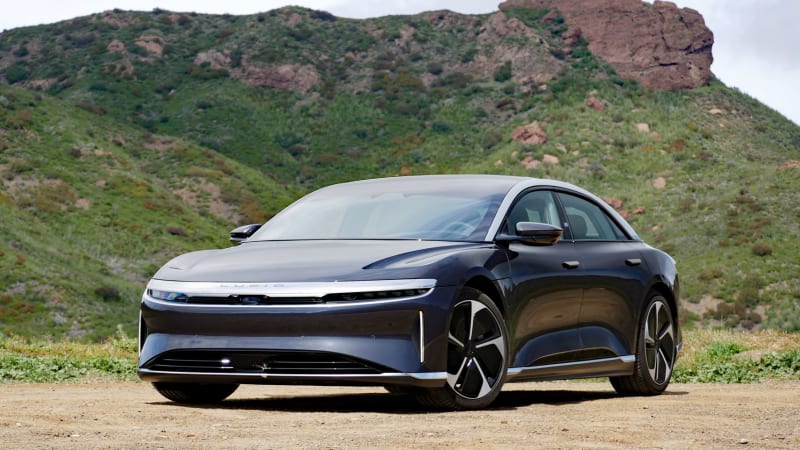Lucid EVs will be able to access Tesla's Superchargers starting in 2025

Lucid’s electric vehicles will be able to plug in to over 15,000 Tesla Superchargers in North America starting in 2025. The automaker is the latest entry in the growing list of companies pledging to support the North American Charging Standard (NACS), also known as the Tesla charging standard. Lucid will give customers access to a NACS adapter for its current vehicles, which are equipped with the Combined Charging System (CCS), in 2025. The company intends to start building NACS ports into its EVs within the same year, as well, so that newer models no longer need to use adapters.
Ford was the first automaker to announce this year that it was going to give its customers access to Superchargers after the White House convinced Tesla to share its charging network with vehicles from other companies. In the months after that, General Motors, Mercedes, Volvo and Polestar, Honda and Acura, Toyota and Lexus, BMW, Hyundai and Kia, Nissan and Subaru revealed that they will also give their customers access to NACS adapters and will ultimately incorporate the standard into their vehicles over the next two years. Even Fisker and Rivian, EV startups like Lucid, are switching.
Lucid vehicles use a 900-volt charging architecture, which became the basis of a Lucid Air promotion that called it the “fastest charging electric vehicle ever.” At the moment, most Superchargers are rated at around 500 volts, and that means charging times won’t be as fast as the company promises. That said, Tesla has started deploying V4 Superchargers that offer higher voltage charging in the U.S., and supporting NACS could convince potential customers in the region to purchase Lucid EVs. As company CEO Peter Rawlinson said, “[a]dopting NACS is an important next step to providing [its] customers with expanded access to reliable and convenient charging solutions for their Lucid vehicles.”



